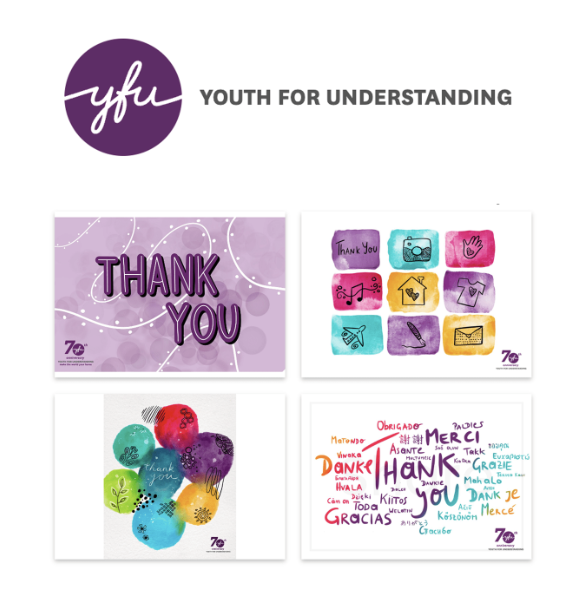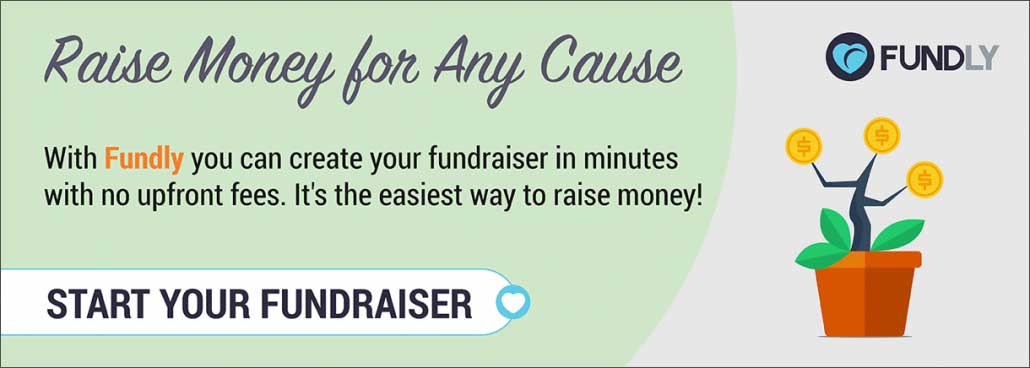
The Ultimate Fundraising Event Checklist: 17 Actionable Steps
Fundraising events have the potential to yield a high return.
Not only do you have the chance to raise money for your cause, but you can meet your donors face-to-face and build stronger relationships with them.
Planning a fundraising event is a multi-step, multi-month process. That’s why we’ve broken down the basics into 3 categories with 17 quick and actionable steps to check off of your fundraising event checklist as you complete them.
Let’s run down the category list:
Let’s break down each categories in more detail.
Fundraising event planning encompasses a range of activities, all designed to ensure your event runs smoothly.
When planning the event, you need to think through a range of options, from picking what your fundraiser will be to selecting the date.
It all needs to tie together. For example, if you’re organizing a tree planting fundraiser, that fundraiser needs to occur during planting season.
For a complete walk-through, check out the list below of fundraising event planning steps.
1. Form your committees
To ensure that your fundraising event runs smoothly, you’ll need to divide your tasks between committees. Each committee will hold a major role in pulling off your event, and they should work together to coordinate plans.
- Form the planning committee. This committee will be in charge of the behind-the-scenes planning before the event. Major tasks will include taking care of event logistics, such as venue and catering, and preparing the planning calendar.
- Form the host committee. The host committee will manage fundraising for your event. From recruiting donors to purchasing crowdfunding software, the host committee should help your organization fulfill your fundraising goals.
- Form the event day committee. This committee will be in charge of executing the event, ensuring that all staff and volunteers are accounted for and in their proper place.
- Determine your subcommittees. Once you have your main committees in place, you’ll need to determine which subcommittees you’ll need to pull off specific aspects of your event. You’ll need to form:
- Theme and decorations.
- Catering.
- Advertising and marketing.
- Social media management.
- Entertainment.
Takeaway: Forming your committees upfront can help your organization delegate tasks and cover every aspect of your fundraising event.
2. Determine your goals
Before you can rush into planning your fundraising event, you need to know what you’re aiming for and which tools can help you get there. To do so, you need to determine your goals. Your goals will direct the course of your event.
- Review key questions with your committees. Asking these questions will help your organization assess your needs and create reasonable goals to fulfill those needs:
- What is the purpose of hosting this event?
- What do we hope this event will improve in our organization?
- What specific cause do we want to promote within our larger mission?
- Determine your fundraising goals. Your fundraising goal will be the amount of money you want to raise for your organization. You may have an overall goal for your organization as well as individual goals for individual fundraisers. To determine how much you should ask for:
- Assess your need. How much does your organization need to accomplish a specific task (Ex: we need $10,000 to build a home for a family in need)?
- Assess your ability. Look to past fundraising events and campaigns to determine the average amount that you’ve raised. Though you can and should aim higher, you want your goal to be realistic based upon your donor base.
- Calculate a challenging, yet reasonable, amount. If your need aligns with your ability, then you can begin calculating your fundraising goal (if not, you may need to reassess the cause you’re trying to fund). Set your goal about 30% higher than what you need to give yourself some wiggle room.
- Determine your stewardship goals. Raising money is only one of the benefits of hosting an event. You should also be striving to meet with your donors and learn more about them face-to-face. Set actionable goals, such as “We want to cultivate 10 major donors.”
Takeaway: Determining your goals will help your organization stay on target during the event planning process and allow you to assess the success of your event once it’s over.
- Review key questions with your committees. Asking these questions will help your organization assess your needs and create reasonable goals to fulfill those needs:
3. Solidify your budget
Sticking to your budget is necessary to ensure that you actually raise money with your event. One of the worst cases for your nonprofit would be ending up “in the red” and using donors’ gifts inefficiently.
Creating a reasonable budget for your event can ensure that you plan accordingly, cut unnecessary expenses, and further your cause.
Consider your expenses, including:
- Venue costs.
- Crowdfunding software.
- Matching gifts software.
- Event software, if necessary.
- Catering.
- Printing costs for marketing materials or invitations.
- Entertainment.
- Promotional items and products.
- Marketing.
- Decorations.
Takeaway: Mapping out all of your expenses can help you create a reasonable budget, so that you can cut costs and remain profitable with your fundraising.
4. Choose a date and venue
Determine your date and venue at least 6 months in advance of your event.
- Book your venue. To determine the venue that will work best for your event, consider:
- Size.
- Layout.
- Cost.
- Parking.
- Sound and lighting.
- Permits and licensing.
- WiFi and cell service.
- Choose your date. Your date will in part be determined by the venue you choose. Work with the event space to find an opening that works for you. You’ll also need to consider dates that will attract the most attendance from your donors. Weekends are generally best because more people can attend; just be sure that your event doesn’t overlap with any major holidays or competing events.
Takeaway: Choose a date and venue at least 6 months in advance that will create the most access for your donors, so that as many of them can attend as possible.
- Book your venue. To determine the venue that will work best for your event, consider:
5. Create a schedule
To ensure that nothing goes undone, you’ll need to create a schedule that delegates all of the necessary tasks by committee, subcommittee, and individual.
- List out your tasks. Write out all the tasks that you’ll need to complete for your event to succeed. Working backwards from the day of the event to the planning phase can help your team take a comprehensive approach to each task.
- Create a detailed, accessible timeline. Now that you know what you need to accomplish, schedule each phase of your plan on a timeline or calendar. Color code the calendar to each committee to keep things organized. Ensure that everyone can access your timeline so that your entire team is on the same page.
Takeaway: Scheduling your event across all of your committees can help ensure that every task is accounted for and that your team can access your timeline holistically.
6. Recruit Sponsors
Sponsors can help you cut event expenses, raise awareness for your event, and provide in-kind donations. Partnering with sponsors can help you build business relationships in your community and receive a higher profit.
- Identify potential sponsors. To determine which sponsors you should request, look for businesses that are:
- Local, or otherwise tied to your community.
- Connected to your nonprofit through board members, staff, or volunteers.
- Supportive of your cause.
- Able to provide the resources that you need.
- Determine sponsorship levels. Identify what your fundraising event needs to be successful and outline sponsorship incentives based upon those needs. For example, you may reward each $5,000 donation with a visible sign at your event and a logo on your marketing materials.
- Prepare sponsorship packets. Centralize all of the information that sponsors need to know in a packet, and send it to the prospects that you identified. Include a handwritten note or call the businesses in advance, preferably using someone connected to both your nonprofit and the business in question.
Takeaway: Recruiting sponsors can help you earn more at your fundraising event. Preparing sponsorship materials can help you reach out to local businesses effectively.
- Identify potential sponsors. To determine which sponsors you should request, look for businesses that are:
For the marketing stage of your next fundraising event, you need to create a cohesive strategy that will resonate with donors and prospects alike.
From branding to announcements to social media, all aspects of your marketing plan need to gel well together.
For a complete walk-through, check out the list below of fundraising event marketing steps.
7. Brand your event
Before you can advertise your event, you need to understand the image you’re projecting to your donors. Branding your event can create recognition between your organization and your donors and keep all of your communications consistent.
- Determine your theme. Your theme will determine the decor, catering, and entertainment that’s most suitable for your event.
- Name your event. Your event will need a name that donors, sponsors, and supporters will recognize. Be specific, and include your cause in the name.
- Create an event logo. Your event logo will be printed on promotional items and marketing materials. You want your donors to think of your organization whenever they see it.
- Standardize color palettes, fonts, and images. To ensure that your message and marketing are consistent, standardize these elements across the board, and create toolkits that your marketing team can reference.
- Write a hashtag. A hashtag may be your primary means of social media marketing. Your hashtag should be cause-centric and catchy.
Takeaway: Brand your event by planning your event name, logo, colors, hashtag, and theme in advance. Make sure that your marketing team has access to standardized toolkits so that your message stays consistent across your advertisements.
8. Start your crowdfunding campaign
To solicit donations online, you can start a crowdfunding campaign leading up to the event. A crowdfunding campaign allows you to collect donations specifically for the event you’re hosting over the course of a designated timeline. To create the most effective crowdfunding campaign, you’ll want to incorporate:
- Your fundraising goal.
- A fundraising thermometer that shows your nonprofit’s fundraising progress.
- A video or photos showcasing your cause.
- A large “Donate” button.
- Social media sharing buttons.
Start your crowdfunding campaign now!
Takeaway: A crowdfunding campaign is an effective means of soliciting online donations for your fundraising event. Showing donors what their donations can achieve for your cause can encourage them to donate before the event.
9. Arrange guest speakers and entertainment
Determine your guest speakers and entertainment well in advance (at least 3 months) so that you can highlight them in your advertisements.
- Choose a guest speaker. Choose someone who has a close connection to your organization, such as a recipient of your nonprofit’s aid or a board member. The speaker should be prepared to inspire your attendees and make a live appeal for donations.
- Book entertainment. Depending on the type of event you’re hosting, you’ll need entertainment, such as a live band. If you’re unsure of what type of entertainment to book, send out surveys to your supporters to narrow it down.
- Prepare the logistics. You’ll need to solidify:
- Travel plans.
- Speech topics or setlist.
- Bio and photos for programs.
Takeaway: Entertain and inspire your event attendees by planning for your guest speakers and entertainment stars at least 3 months in advance of the event.
10. Select promotional items
To bring in more revenue at your fundraising event, you can sell promotional items. You can sell items in advance at an online storefront, and you can sell them at the event itself.
- Choose your items. When choosing your items, you’ll want to select those that make the most sense for your event. Active events, for example, could be paired with water bottles or t-shirts.
- Brand your items. Include your event name and logo on your items. Doing so will remind attendees of your event whenever they use the item in the future. Plus, it’s free advertising!
Get inspired with these fundraising ideas!
Takeaway: Promotional items allow your supporters to donate more and take home a memento once your event is over. Put some thought into which items represent your organization and your event the best.
11. Develop publicity materials
To advertise your event, you’ll need to publicize it throughout your community and in targeted appeals.
- Create flyers. Create printed flyers to advertise your event. Place them around the community in prominent locations. You can include QR codes on the flyers, so that donors can access your event page by scanning the code with their phones.
- Post on social media. Write social media posts that your supporters can share with their friends and family. Social media posts should include your event hashtag and link to your crowdfunding page.
- Reach out to local news sources. Creating a press release for local newspapers can help spread the word. You can also invite the media to cover your event and advertise on local radio and tv stations.
- Send targeted advertisements. Send personalized invitations and advertisements to your current donor base, especially those with a past affinity for events.
- Work with your sponsors. Work with sponsors to publicize your event. You can include their logos on your publicity materials, and they can advertise your event via their corporate social media channels.
Takeaway: Creating a multi-channel marketing plan can help you reach the most prospects for your fundraising event.
12. Enable Peer to Peer Invites with eCards
Driving attendance and interest is a challenge no matter the event. We’d recommend you consider including an option for peer-to-peer invites via a platform like eCardWidget.
Including peer-to-peer ecard invites as part of the marketing strategy for an event can be highly beneficial for several reasons:
- Cost-effective: Ecard invites are a cost-effective alternative to traditional paper invitations. They reduce printing and mailing costs, making them an affordable option for event organizers.
- Viral potential: Peer-to-peer sharing allows for organic growth and increased visibility of your event. When people share the ecard invites with their network, it can easily go viral, reaching a larger audience without additional marketing efforts.
- Personalization: Ecard invites can be easily customized to include personal messages, images, or branding, which can make the invitation feel more special and relevant to the recipient.
- Environmental impact: Ecard invites are a more environmentally friendly option compared to paper invitations, as they don’t require any physical resources to produce or deliver.
- Easy tracking and follow-up: With ecard invites, you can monitor engagement and response rates, making it easier to track RSVPs and follow up with potential attendees.
- Instant delivery and accessibility: Ecard invites can be sent and received instantly, making them a convenient option for both the sender and the recipient. They can be accessed on multiple devices, including smartphones and computers, ensuring that the invite is always available.
- Integrations and automation: Ecard invites can be integrated with other digital tools, like event management platforms or CRM systems, for seamless coordination and data management. This can help streamline the event planning process and make it easier to keep track of attendees.
- Social media compatibility: Ecard invites can be easily shared on social media platforms, allowing your event to gain more exposure and attract a larger audience.
- Informative: Ecard invites can include more information than traditional invitations, such as interactive maps, detailed event agendas, and links to related resources or registration pages.
- Time-sensitive promotions: With ecard invites, you can create time-sensitive promotions or incentives for early registration, which can help drive attendance and generate buzz around your event.
By incorporating peer-to-peer ecard invites into your marketing strategy, you can leverage these advantages to create a more effective and engaging event promotion campaign.
Your job isn’t over the minute the event begins. In fact, you need to plan for day-of hosting activities in advance and leave yourself time to address the unexpected.
The better you can maximize your time during the event, the better your fundraising results will be.
For a complete walk-through, check out the list below of fundraising event hosting steps.
13. Prepare for ticket sales
Sell your event tickets through your crowdfunding platform. Encourage supporters to purchase tickets in advance or RSVP so that you can anticipate the size of your crowd and prepare to meet any potential major donors.
- Determine ticket pricing. You may want to sell individual tickets, VIP tickets, or family packages (at a discounted rate). Be sure to incorporate automated pricing into your event registration system to make the process simple.
- Design your tickets. Create a ticket design that focuses on your cause and the event itself. Remember that supporters who purchase tickets online may want the option to print them off.
- Invite supporters to your event. Send personalized invitations to your current donor base and post a large invite on social media. Direct supporters to your event registration page or crowdfunding campaign, so that they can purchase their tickets.
Takeaway: Determine how you want to sell tickets to your donors and then direct them to your crowdfunding page to purchase their tickets.
14. Equip your fundraising team with the right software
Using a crowdfunding platform will allow your organization to receive donations from a wide variety of online supporters. You may need additional tools and integrations to pull off your event. Among the most valuable is an event planning software.
Your organization should utilize a powerful event management software that is specifically designed to meet the needs of organizations like Universities and businesses, as well as associations. After all, fundraising events are common throughout many spheres, and you don’t want to find yourself lacking the tools you need to be successful.
Event software can streamline your organization’s event in the planning and execution stages. Event software can come in many forms, but make sure whichever software you choose comes fully equipped with:
- A custom form builder so you can record all data points that you deem important for your organization.
- Data reporting tools that allow you to keep track of attendees and make informed decisions for current and future events.
- Custom tool development provided by the platform that will ensure you never find yourself without the tools you need.
- A branded mobile app that acts as a seamless extension of your event, allowing attendees and donors to have constant access to your organization’s event information—and potential donation pages!
Fundraising events of any kind take a lot of work and it is too easy for your fundraising team to become bogged down trying to complete all of the necessary tasks. Use an event software to streamline the minutia of your event and focus more important things (like forging relationships with donors).
Depending on your event, you may need to employ other types of software including:
- Peer-to-peer software. You can also equip individual fundraisers with personal fundraising pages for peer-to-peer fundraising. In peer-to-peer fundraising, individual supporters reach out to their networks to solicit donations.
- Auction software. Auction software is specialized for charity auctions, and it can be vital to their success. Auction software allows bidders to place bids via their mobile devices and automates the checkout process, which helps guests (and your team) avoid long lines at the end of the event.
- Text-to-give software. Text-to-give software allows donors to give to your organization with their mobile devices. This software can be effective at events, as donors rally behind your cause and give all at once after a live appeal.
- Matching gift software. If you know that any of your attendees are matching gift eligible, make sure to start advertising matching gifts to them before, during, and after the event!
Though there are many different types of nonprofit software you can use to manage and enhance your fundraising event, you should make sure the tools you choose line up with the type of event you’re hosting, as well as the scale and frequency of events you plan.
As with any nonprofit software, the event solution you select should be reflective of your organization’s objectives, so think critically before making your purchase.
Takeaway: While event management software may be a nonnegotiable, you should also consider investing in different types of software to raise the most from your donors, depending on the type of event you are hosting.
15. Delegate your volunteers and staff
As you near the date of your event, ensure that a schedule is in place to take care of the event logistics. Recruit enough volunteers to manage all aspects of your event, including:
- Set-up. Volunteers will help set up the event before it occurs. Volunteers should begin work at least two hours in advance of the start time.
- During the event. If you’ve purchased event software, you may have trained staff on hand to manage the technical aspects of your event. Volunteers should be trained to answer questions, direct attendees, and support your event efforts. Provide them with uniforms or t-shirts so that they stand out from the crowd.
- Clean-up. Once the event is over, you’ll need volunteers to help deconstruct the event space and clean up. Make sure that you have enough volunteers to cover this shift; you don’t want to be moving tables and equipment while understaffed.
Set your volunteers up for success by clearly communicating what their responsibilities will be and having team members on-site to answer questions and supervise their shifts. The more you engage with your volunteer team, the more successful your event will be!
Takeaway: Delegating volunteer and staff tasks for the event day can help ensure that everything runs smoothly from beginning to end.
16. Prepare the venue
To ensure that your event space is ready to host your event, you’ll need to double check that everything is in order.
- Confirm permits and licensing. Ensure that you’re legally able to host your event by double-checking with your city or with the event space.
- Approve seating chart. If your attendees will be seated at tables, make sure that everyone has a place to sit. Create place cards so that guests can easily find their seat.
- Confirm media attendance. If you have reporters covering your event, make sure that you have space to accommodate them.
- Prepare photographers. Events offer plenty of photo opportunities for your organization. Bring your photographers a few days in advance, so that they can establish the lighting in your event space and make any necessary adjustments to their equipment.
- Set up promotional items. Your promotional items should be ordered and ready to display. Set them up on tables so that attendees can clearly see each item that you’re offering.
- Confirm catering. Confirm that all of your food will be delivered on time and maintained properly (i.e. refrigerated or heated if necessary).
Takeaway: Prepare your venue by confirming that all of the logistics are in place and that everything is set up properly. Taking the time to ensure that your venue is ready for the event can help everything run smoothly on the actual event day.
17. Meet your crowdfunding goals
Before the event, you’ll need to assess where you are in your crowdfunding goals. If you’ve met your goal, then you can focus on exceeding it during the event with a live appeal.
If you’re lacking in funds, you may need to amp up your fundraising efforts via email blasts and social media posts, rallying both attendees and remote supporters for a last-minute fundraising charge.
Learn more about achieving success with a crowdfunding campaign here.
Takeaway: Assess your fundraising compared to your goals before the event, so that you can push for a last-minute fundraising effort or prepare to go beyond your goal with your event attendees.
18. Create a follow-up plan
Once the event ends, your work isn’t over. You’ll need to plan a follow-up in advance so that your supporters know how much your organization appreciates their attendance and donations.
- Process payments. To ensure that your organization receives donations and that your donors receive their receipts, process payments quickly.
- Evaluate budget. Compare your budget to your actual spending. How much was your net profit?
- Update supporters. Within 24 hours after the event, post an update to social media that shows how much your donors raised for your cause. Include a photo from the event itself. You can continue to update social media with photo galleries, so that supporters can tag themselves and their friends.
- Send thank you notes. Send thank you notes to all of your attendees and volunteers. You may need to create personalized thank you’s for major donors to steward them properly. All thank you notes should be sent within a week after the event.
- Email event surveys. Once the event is over, learn how you can improve your next event by sending out surveys. Ask your attendees:
- What they enjoyed the most.
- What they enjoyed the least.
- What could be improved for next year.
- For any additional comments.
Takeaway: Preparing your follow-up plan in advance will help you thank donors properly and set the foundation for long-term relationships, as well as future events.
19. Send Thanks via a Personalized eCard!
Sending thank-you e-cards to participants after an event is an important gesture that demonstrates your appreciation for their attendance and involvement.
Here are several reasons why you should consider doing so:
- Express gratitude: Thank-you e-cards are an excellent way to show your gratitude to attendees for taking the time and effort to attend your event. It helps them feel valued and appreciated, which can contribute to their overall satisfaction.
- Strengthen relationships: Sending a personalized thank-you message can help deepen relationships with participants by demonstrating that you genuinely care about their experience. This can foster loyalty and trust, which may lead to ongoing support and involvement in future events.
- Encourage feedback: A thank-you e-card can also serve as an opportunity to solicit feedback about the event. By asking for their input, you can gain valuable insights that can be used to improve future events and address any concerns or suggestions they might have.
- Professionalism: Sending thank-you e-cards reflects positively on your brand or organization. It showcases your professionalism and commitment to maintaining strong communication with participants.
- Cost-effective: E-cards are an environmentally friendly and cost-effective alternative to traditional paper cards. They can be easily created and distributed via email, which also allows for more efficient tracking and follow-up communication.
- Promote future events or initiatives: A thank-you e-card can be an opportunity to inform participants about upcoming events or initiatives that may be of interest to them. This can help keep your audience engaged and foster long-term support.
- Leave a lasting impression: A well-crafted and thoughtful thank-you e-card can leave a lasting positive impression on participants. This can help ensure that your event remains memorable and that attendees are more likely to participate in future events.
Sending thank-you e-cards after an event is a simple yet effective way to express gratitude, build relationships, gather feedback, and promote future events. It reflects well on your brand or organization and can contribute to long-term success.
With this checklist, you should be more than prepared to tackle your next fundraising event!
Get started today by creating your crowdfunding campaign!
Additional Resources
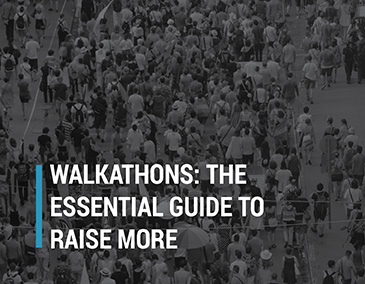
Walkathons: The Essential Guide to Raise More
Need help planning your next walkathon?
From ideas and themes to best practices, our guide will walk you through your next event from start to finish. We’ll cover budgeting, crowdfunding software, and more!
Click below to view our essential guide on how to raise more money at your walkathon!
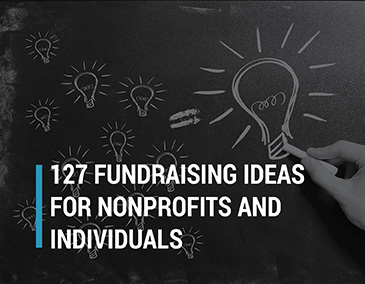
127 Fundraising Ideas for Nonprofits and Individuals
Tired of repeating the same boring fundraisers?
We get it! And don’t worry, we’re here to help! With 127 exciting fundraising ideas from car washes to viral video fundraisers, there’s something for everyone on this list. You’re bound to find something you love!
Check out our ideas for some inspiration for your next fundraiser.
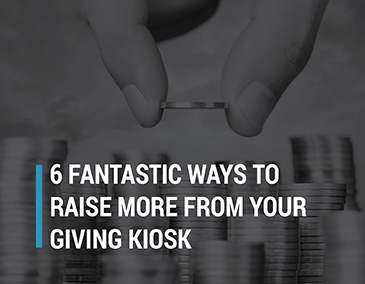
6 Fantastic Ways to Raise More From Your Giving Kiosk
Giving kiosks are incredible tools for receiving credit card donations during fundraising events or even in the midst of day-to-day operations.
But without a thought-out fundraising strategy, you could be leaving donations behind.
Check out these 6 ways to raise more with your kiosk!

 Fundraising Event Planning
Fundraising Event Planning Fundraising Event Marketing
Fundraising Event Marketing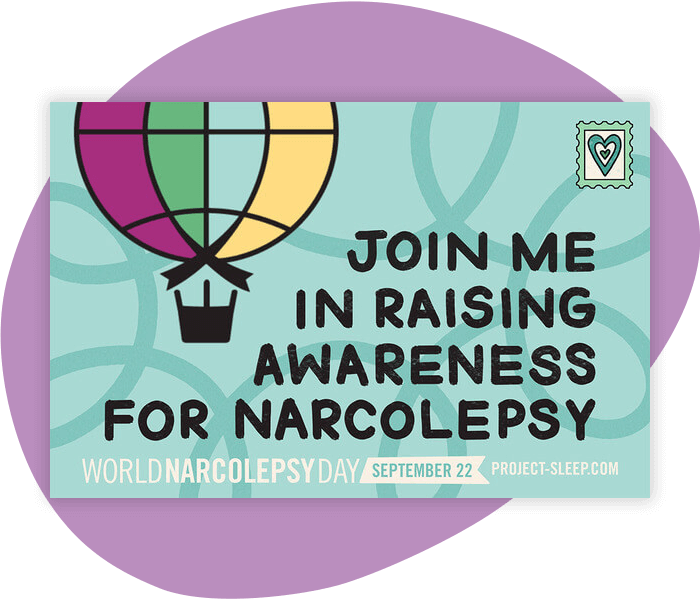
 Fundraising Event Hosting
Fundraising Event Hosting